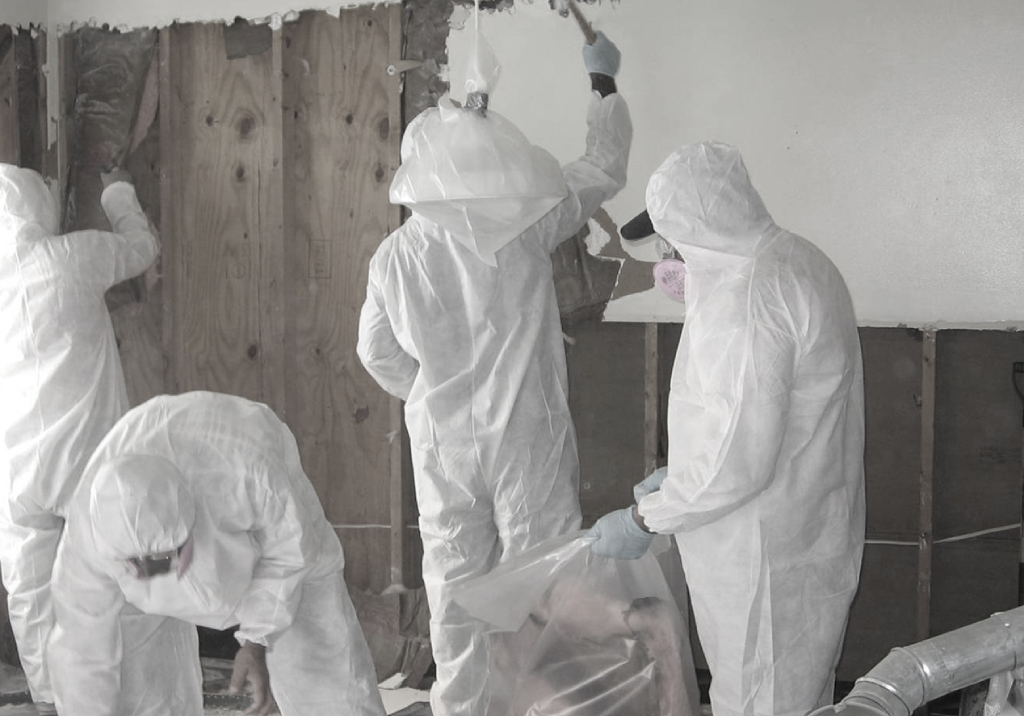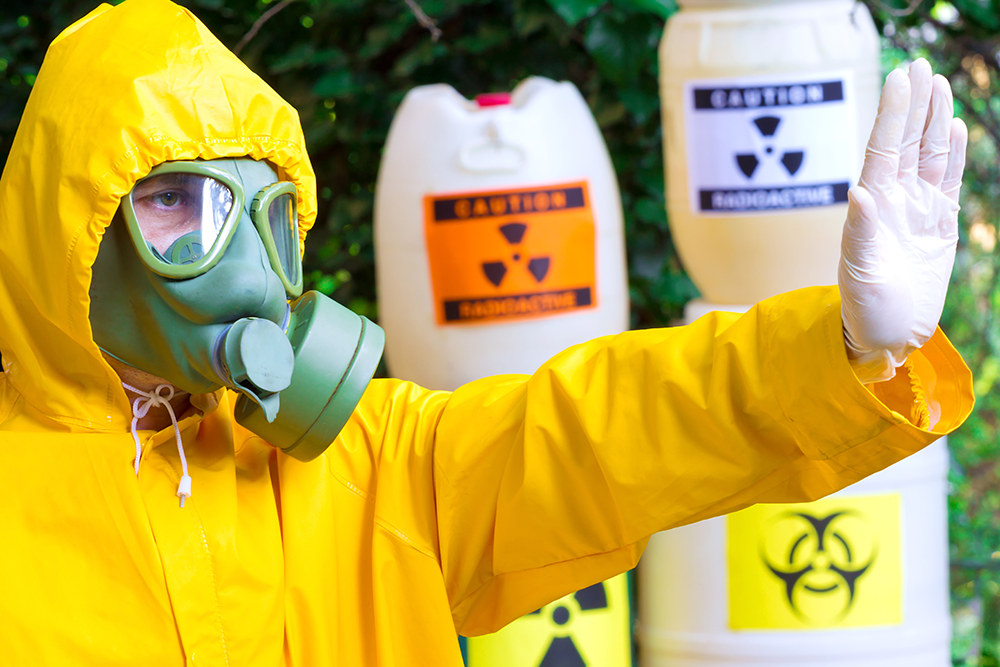Clandestine Lab Cleanup: Comprehensive Decontamination for Hazardous Sites
Clandestine Lab Cleanup: Comprehensive Decontamination for Hazardous Sites
Blog Article
Professional Biohazard Cleansing and Decontamination for Blood, Bodily Fluids, and Hazardous Materials
The possible health dangers linked with direct exposure to biohazards highlight the vital need for meticulous handling and comprehensive cleanup. As we navigate the complex landscape of biohazard cleaning, comprehending the nuances of regulations, compliance, and the specific tools at play comes to be necessary in making sure a safe and comprehensive decontamination process.
Wellness Dangers of Biohazard Exposure
Exposure to biohazards positions substantial health threats that can cause serious consequences for individuals and areas alike. Biohazards incorporate a vast array of biological compounds, including blood, physical liquids, mold and mildew, germs, infections, and various other possibly contagious materials. When individuals come right into contact with these biohazards, whether through accidents, improper handling, or environmental direct exposure, they encounter the threat of having severe ailments or conditions.
Among the main health dangers connected with biohazard direct exposure is the transmission of contagious diseases. Bloodborne pathogens such as HIV, liver disease B and C, and numerous germs can be present in biohazardous products, posturing a straight hazard to human wellness. Inhaling air-borne biohazards like mold and mildew spores or entering call with infected surfaces can also cause respiratory system problems, allergies, and other negative health results.
In addition, biohazard exposure can have long-lasting health and wellness effects, with some diseases showing up years after the preliminary call (Blood Cleanup). For that reason, it is essential to prioritize proper biohazard cleansing and decontamination to mitigate these health threats and guarantee the safety and security of communities and individuals

Specialized Educating for Biohazard Cleanup
When it comes to handling biohazard clean-up successfully and securely, specialized training plays a basic duty in ensuring proper decontamination treatments are followed. Biohazard cleanup needs details knowledge and skills to successfully minimize risks related to bloodborne microorganisms, physical liquids, and hazardous products. Specialists learnt biohazard cleanup undertake strenuous instruction on exactly how to securely deal with, eliminate, and get rid of biohazardous products to stop contamination and direct exposure.
Specialized training for biohazard cleaning covers a range of vital subjects, consisting of correct individual safety equipment (PPE) usage, bloodborne pathogen understanding, purification strategies, and unsafe waste disposal methods. People trained in biohazard clean-up are outfitted with the essential proficiency to examine contamination degrees, determine prospective risks, and carry out proper cleanup procedures in conformity with governing standards.
Constant training and education are critical in the field of biohazard cleanup to stay updated on the current decontamination technologies, safety and security protocols, and laws. By purchasing specialized training, biohazard cleaning specialists can efficiently reply to emergency cleanup scenarios and guard both public wellness and the environment.
Importance of Proper Decontamination Techniques
Making use of correct purification methods is vital in biohazard clean-up to successfully reduce and eliminate unsafe products wellness threats. Reliable decontamination not just makes certain find here the removal of noticeable traces of blood, physical liquids, and various other biohazards however likewise targets undetectable pathogens that might pose severe wellness risks otherwise correctly removed. By following strict purification protocols, trained experts can considerably lower the risk of exposure to hazardous microorganisms, viruses, and germs that can lead to infections or conditions.
Proper decontamination strategies involve the usage of specialized devices and anti-bacterials that are particularly developed to neutralize biohazards properly. Complete cleansing and disinfection of infected locations are important to protect against the spread of pathogens and guarantee a risk-free setting for owners. Additionally, the right disposal of biohazardous waste adhering to purification treatments is vital in stopping contamination of various other surface areas or people.

Devices and Tools for Safe Cleaning
The correct devices and tools play an essential role in guaranteeing the reliable and safe cleanup of biohazardous products. When managing blood, physical liquids, or dangerous materials, biohazard cleansing professionals rely upon specialized equipment to reduce direct exposure dangers and thoroughly sanitize the afflicted location. Personal safety devices (PPE) such as handwear important link covers, masks, goggles, and coveralls are vital to safeguard versus direct contact with possibly infectious products. In addition, biohazard cleaning packages consisting of disinfectants, absorbing materials, and biohazard bags are made use of to safely contain and get rid of of contaminated things. Blood Cleanup.
Advanced cleansing devices like hospital-grade anti-bacterials, HEPA-filtered vacuums, and misting machines are employed to sterilize surfaces and eliminate biohazards efficiently. Specialized tools such as sharps containers and biohazard waste disposal containers are utilized to securely take care of sharp items and biohazardous waste products. By utilizing the best devices and devices, biohazard cleansing professionals can make certain an extensive cleaning procedure that focuses on safety and security and reduces wellness risks for both workers and owners of the affected area.
Laws and Compliance in Biohazard Cleansing
Proper adherence to policies and compliance criteria is paramount in biohazard cleaning to guarantee the safety and security of both employees and the environment. Government companies such as OSHA (Occupational Safety And Security and Wellness Administration) and the EPA (Epa) have developed details standards for biohazard cleanup procedures to decrease health threats and environmental contamination. These guidelines cover a series of aspects including the handling, transportation, and disposal of biohazardous materials, along with the needed training and protective equipment needed for workers involved in the cleanup procedure.
Biohazard cleaning companies have to remain up-to-date with these laws to ensure that their operations meet the called for security standards. Failing to conform with these policies can cause extreme repercussions, including penalties, lawful action, and jeopardizing the health and wellness of individuals and the setting. By adhering to rigid policies and compliance steps, biohazard cleaning firms can effectively minimize threats and guarantee a risk-free and complete cleanup process for all parties included.
Verdict
To conclude, biohazard cleansing and decontamination need specialized training, appropriate techniques, and adherence to policies. Direct exposure to blood, physical liquids, and harmful products presents considerable wellness dangers, making it vital to utilize the right equipment and tools for secure cleaning. By following click resources stringent methods and standards, professionals can efficiently minimize the dangers connected with biohazard exposure and make sure the safety and security of both themselves and others.
As we navigate the intricate landscape of biohazard clean-up, comprehending the subtleties of laws, compliance, and the specific devices at play comes to be necessary in guaranteeing a thorough and safe decontamination process. (Blood Cleanup)
When it comes to dealing with biohazard clean-up effectively and safely, specialized training plays an essential function in making sure appropriate purification treatments are complied with.Using appropriate decontamination methods is important in biohazard clean-up to successfully lessen and remove unsafe products wellness dangers. Furthermore, biohazard cleaning kits consisting of anti-bacterials, absorptive materials, and biohazard bags are utilized to safely dispose and contain of contaminated items.
Government agencies such as OSHA (Occupational Safety And Security and Wellness Management) and the EPA (Environmental Security Company) have established details standards for biohazard clean-up procedures to minimize wellness dangers and environmental contamination.
Report this page